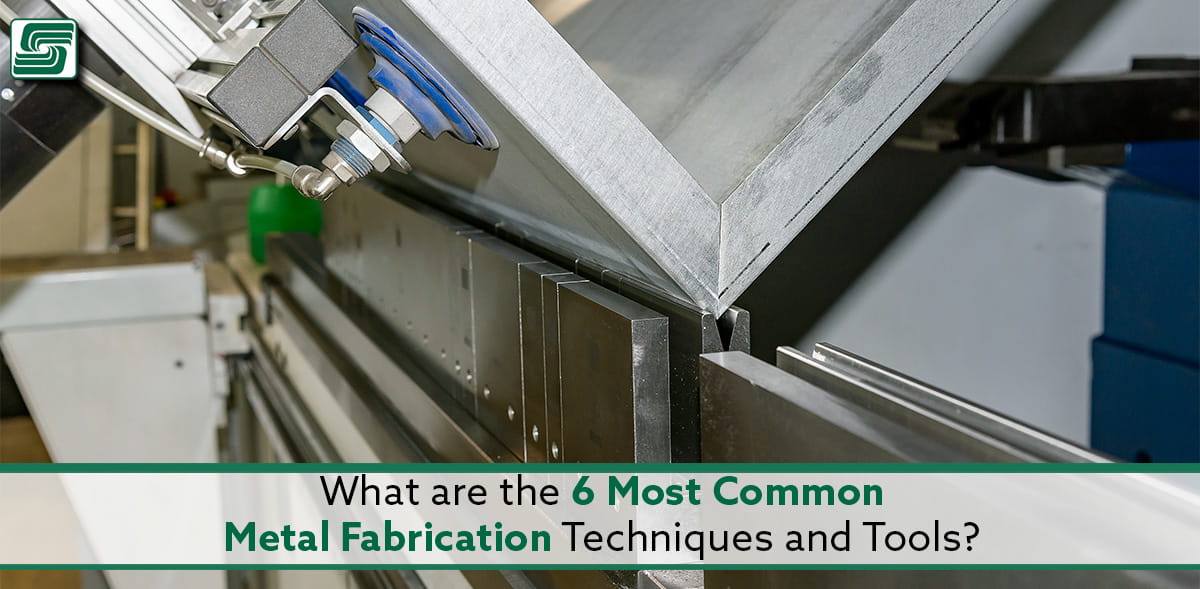
When manufacturing metal parts, companies use many fabrication techniques and tools. Different processes and tools give different results and limitations, and understanding what is available helps determine the best process for a project. This blog post covers the most common metal fabrication techniques and tools among metal fabricators. Metal fabrication involves multiple steps before producing products used in various industries to create custom pieces from raw metals or materials such as plastic or wood laminated with metals. Here is more information on each of them:
Bending
Bending is a forming process using a hydraulic press to bend metal parts to a 90-degree or 180-degree angle. They often use this process on parts having a piece of straight metal that needs to be bent at a 90-degree angle to create a right-angle joint. If a bend needs to be at a 180-degree angle, that’s called a double bend. Double bends can often be more difficult to do because the metal may require additional support.
Bending is a good option for creating metal parts requiring additional customization with tight tolerances.
Bending gives you precise control over the metal and gives it a specific shape, but it has limitations in certain materials. For certain grades of steel, it’s not possible to bend above a certain thickness. Bending thin materials or materials that don’t have enough strength to hold their shape causes them to buckle and break.
Metal Cutting
Cutting metal parts is a very common process—and can be done with a wide range of cutting tools. Metal cutting is efficient and precise, from laser cutting to water jet cutting.
The most common way to cut metal would be with shears, which cut materials of all types—especially thin metals. Shears are available in different sizes, shapes, and styles to create different metal cuts.
CNC machines are also a popular choice for cutting metal. CNC machines are computer-controlled standalone units programmed with a CAD design to create a specific part.
There are also many saws used to cut metals. Depending on the type of metal you’re working with, you’ll need a specific type of saw to get the job done.
Metal Stamping
Stamping is a process using pressure and force to shape metal. Pushing metal into a stamping press creates a specific pattern or design that’s then pressed into the metal.
Stamping is a quick process and creates large quantities of parts. You’ll often find stamping used for creating metal logos or branding for products.
Fabricators typically stamp on softer metals like brass, copper, and aluminum, creating thin parts with tight tolerances, creating various shapes and sizes, and are often used to create parts with a design pressed into the metal.
Welding
Welding combines two pieces of metal by fusing them into a single piece. Welding is a great way to join multiple pieces to make one large piece of metal to build almost anything from steel buildings to bridges.
Stick welding or shielded metal arc welding (SMAW) is a popular way to weld thin-gauge metals together, and they use an electric arc to heat the metals and then press them together. Another popular welding process is called a flux core wire (FCAW), which uses a wire with flux inside to help clean up the slag materials during the welding process.
Computer Numerical Control (CNC) Machining
CNC machining is a process that uses computer software to control a machine that makes parts. CNC machines are versatile and make parts from various materials, including wood, plastic, and even metals. CNC machining can create parts requiring very specific and accurate measurements.
The CNC programming decides what the final product looks like and is a very efficient process, quickly producing many parts and making multiple sets of parts from a single computer program.
Coining
Coining is a process that uses pressure to shape metal, similar to stamping. Instead of forcing the metal into a stamp, fabricators place metal in a coining press that creates a specific pattern or design that’s then pressed into the metal. Also, like stamping, coining is a fast process and creates large quantities of parts. You’ll often find coining used for creating metal logos or branding for products working with softer metals like brass, copper, and aluminum.
Sheet Metal Fabrication
Sheet metal fabrication is creating custom sheet metal parts. Sheet metal fabricators take a piece of sheet metal and shape it into a specific part. The sheet metal fabricator measures the part's dimensions, marks it on the metal, and then uses different tools to shape it.
Sheet metal fabrication is very similar to a production line, starting with a piece of raw metal, shaping it, and then moving to the next station, where the process repeats until they have created all the parts.
Sheet metal fabrication is typically used to create parts that require very specific dimensions, and you’ll often find sheet metal fabrication used to create custom parts inside a product.
Continuous Process Manufacturing
A continuous manufacturing process is a method of fabricating parts using automated machines, and a single machine creates multiple parts or a single part continuously.
One example of continuous process manufacturing is a punch press, which feeds a piece of steel, presses the part, and then the machine is rotated to feed the next part. The punch press is a very efficient way to make parts and is programmed to create parts quickly.
In Sum
Metal fabrication is a complex process requiring multiple steps and different tools. The six most common metal fabrication techniques are bending, metal cutting, metal stamping, welding, CNC machining, and continuous process manufacturing, creating custom metal parts of any shape and size.